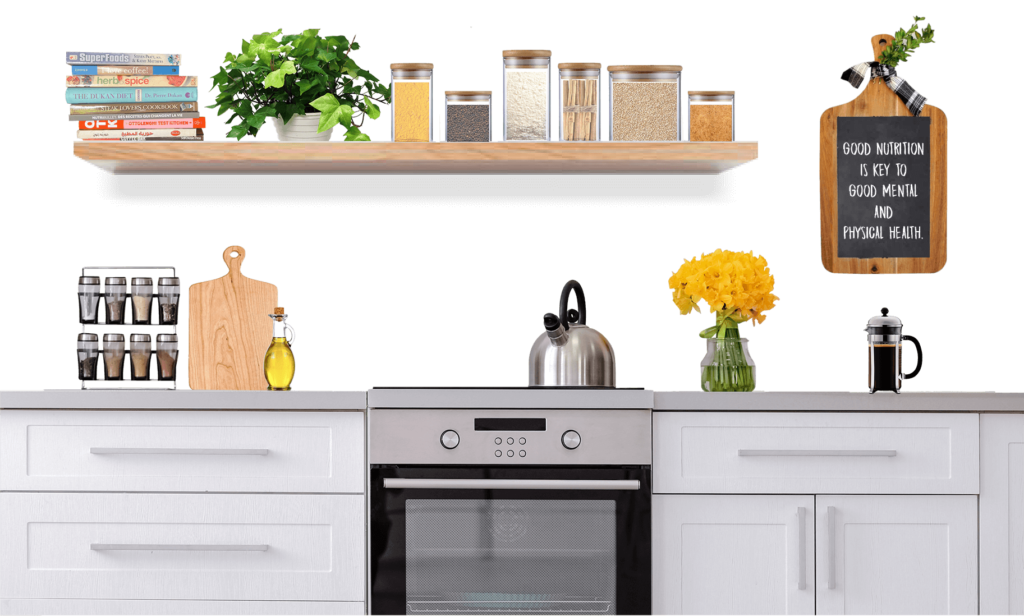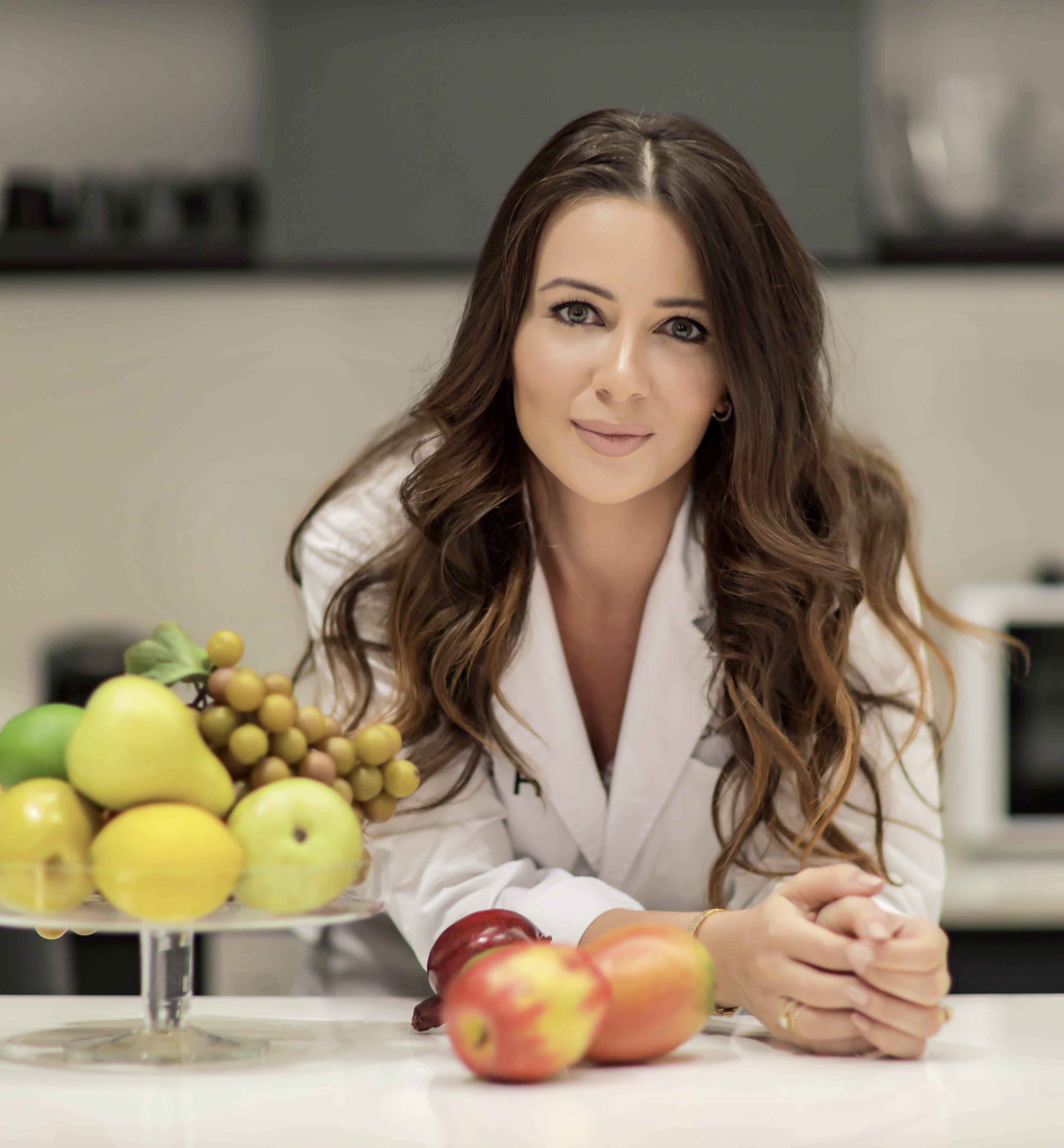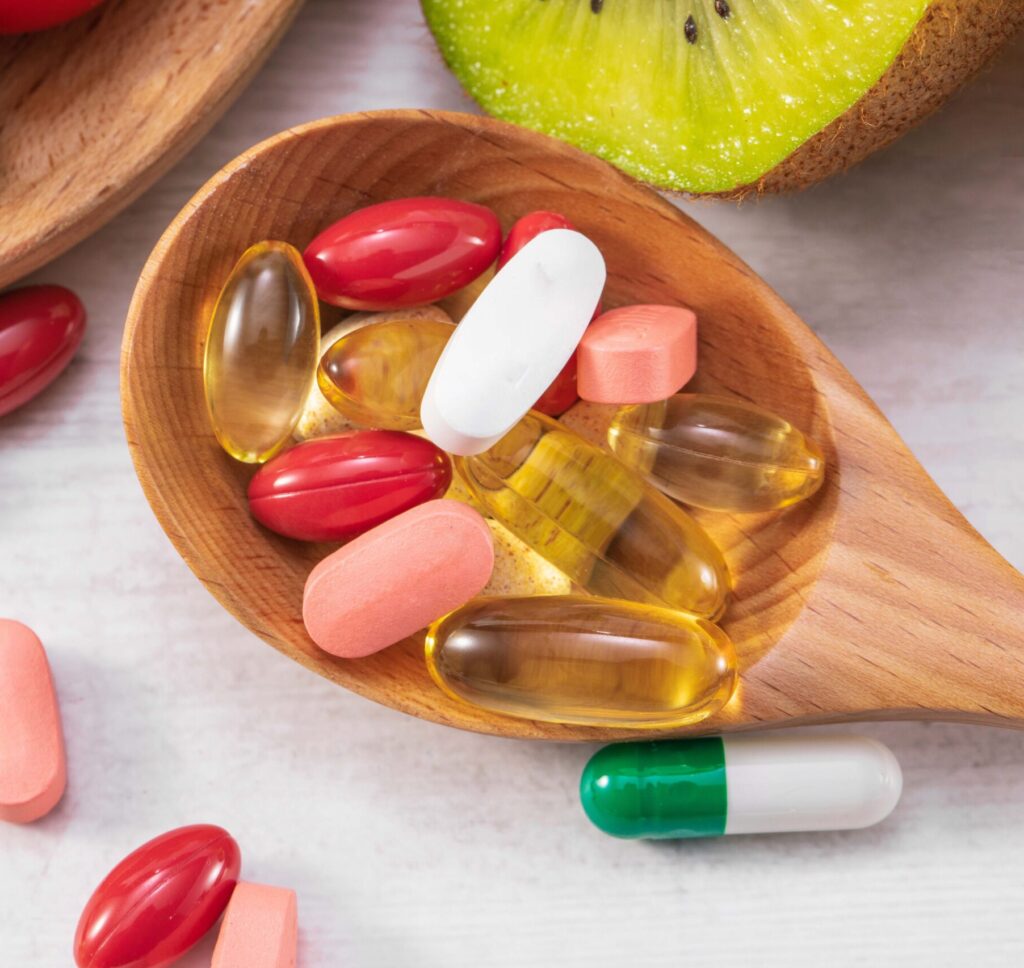
Welcome
to my Kitchen
In this space, I bridge the gap between science and the art of cooking.
Click on my kitchen shelf below to discover some of my favorite ingredients. Also, make sure to browse my free and healthy recipes.
Ingredients I always have on my shelf
For a better kitchen experience check our Desktop version

Turmeric:
When you consume turmeric, you are primarily taking it because it contains curcumin (2-8%). Curcumin is the principal active ingredient with antioxidant and anti-inflammatory properties. It also provides several proven health benefits. If you cannot obtain it fresh, opt for a good source of powdered turmeric (Don’t get cheap ones!). Curcumin is nearly lost when turmeric is converted into powder.
Black Pepper:
Black pepper makes the beneficial compounds in turmeric more bioavailable. I like to combine both spices in one dish for maximum benefit and absorption.
Coconut flour:
Baking is one of my favorite activities, and I mostly aim to prepare super healthy recipes. I try as much as I can to avoid gluten; this is why I love coconut flour. I find that it’s really tasty, and it’s very affordable given how much it could last in your kitchen.
Coconut flour has a lower glycemic index rating than the one found in wheat flour, which means it takes longer to digest and absorb. It also contains more fiber and protein than wheat flour does. Therefore, it can also help you control blood sugar and enjoy a gluten-free, gut-friendly dessert. The most important tip when using coconut flour for baking is sticking to the recommended servings. 1 tablespoon of coconut flour can go a long way and turn a spongy cake into a dry bake! So, make sure to measure your servings well.
A helpful tip when experimenting with recipes would be to use this conversion scale:
“1 cup flour = 1/3 cup coconut flour.”
Check out my healthy baking recipes for inspiration.
Cinnamon:
Cinnamon is one of the tastiest and healthiest spices on the planet. It is loaded with antioxidants. It’s by far my favorite! I use it with everything; on top of eggs, in stews and smoothies, etc.
My recipes never lack cinnamon!
It has incredible properties: it can lower blood sugar levels, reduce heart disease risk factors, and provide additional health benefits. Unfortunately, most of the cinnamon available in supermarkets is part of the cheap cassia variety, which might be harmful in large doses due to its high coumarin content. So, make sure to get good quality ceylon cinnamon ensuring all its benefits.
Quinoa:
I love quinoa, and I use it frequently in my salads. I also serve it on the side, instead of rice, with chicken or stews I make. It’s super easy to prepare. You can store it in the fridge for a week, and you can get creative with the recipes.
Quinoa is classified as whole grain. It is a good source of plant-based protein and fiber. One cup of cooked quinoa provides about 8 grams of proteins and 5 grams of fiber. Unlike other plant-based proteins, quinoa is a complete protein. This means that it contains all 9 essential amino acids that our bodies cannot make on their own. Quinoa is also naturally gluten-free and can be eaten safely - if one has a gluten intolerance, such as celiac disease.
Coconut sugar:
Coconut sugar is a natural plant-based sweetener with a lower chance of spiking your blood sugar levels. It is my personal go-to replacement for refined sugar.
Dive more into my kitchen
Discover why nutrition is important for your gut health.
Gut health refers to the health of the microbiome that inhabits our digestive tract.
Today, research shows that these helpful microorganisms play a key role in determining the state of our physical and mental health. Food is one of the main factors that affect our gut microbiome health.
Consuming rainbow-colored dishes ensures a balanced gut. Ultimately, it reduces inflammation in the body and the risk of chronic diseases, mainly insulin resistance, diabetes, high cholesterol, obesity, and even autoimmune diseases.
So, put on your aprons, and let’s prepare some of Dr. Chérine’s delicious and easy healthy recipes.
Dr. Chérine's Healthy Recipes
Click to prepare my favorite easy, quick, and healthy rainbow-colored dishes

What we eat is central to our health
Discover how daily eating habits can affect cellular health
What you eat and how you eat it can alter how your body reacts, how your cells mutate, and if you develop chronic conditions that can burden your life.
Nutrients in food give your body instructions on how to function, can affect hormone secretion, and are one of the best preventive antiaging tools in medicine.
This is why all of Dr. Cherine’s recipes are put together to offer your body optimal nutrient content and diversity.
Does your body need more than food?
Why should you take supplements?
Micronutrients are also called essential nutrients because the body cannot produce most of them. The best way to ensure an optimal micronutrient intake is to eat colorful dishes with a variety of ingredients. Supplements ( minerals, vitamins, protein powder ) are usually given when someone’s diet is not meeting their daily needs. But in today’s modern world, taking dietary supplements can be necessary because the foods we eat are losing their nutritive value. This loss can be as high as 50 to 70% and is mainly due to the way it’s grown, transported, stored, and cooked.

